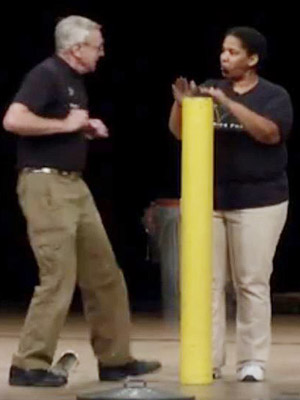What Happens
Hoot tubes is a demo, in which a wire mesh at the base of a tube is heated, air is heated inside a tube and a tone is produced in the tube.
How it Happens
The physics behind this demo is that when the air at the base of the tube is heated, it moves upward through the mesh. The mesh creates a turbulence and a standing wave is formed which creates the tone.
This is really the principle used by any wind instruments in a band or orchestra. The instrument has a hollow tube of some sort, its length will determine which frequencies it will amplify and its shape will determine the quality or type of sound it will give out. The musician produces a vibration, usually with the lips or a reed, and the air in the hollow tube will vibrate in resonance with whatever frequency it is designed to amplify.
The simplest and easiest to understand is the trombone. Notice that when a trombonist wants a lower note, she will move the slide to make the vibrating air column longer, and a higher note is achieved by moving the slide to make the vibrating air column shorter. There is also an interplay of the tightness of the embouchure to get other notes, but with a given tenseness given by the musician's lips, the length of the tube will then decide which note is sounded.
Vocabulary
Standing wave: Unlike a traveling wave (demonstrated in the audience wave, and anti-node jumping), a standing wave remains in the same place and is formed whenever two identical waves interfere with one another while traveling opposite directions.
